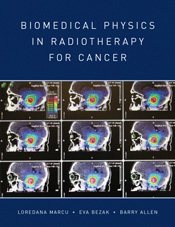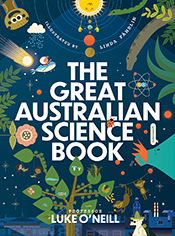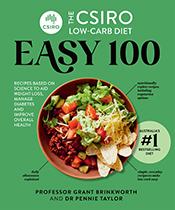Biomedical Physics in Radiotherapy for Cancer
By: Loredana Marcu, Eva Bezak, Barry Allen
Brings together three major disciplines in radiation oncology: radiotherapy physics, radiobiology and clinical trials.
The scientific and clinical foundations of Radiation Therapy are cross-disciplinary. This book endeavours to bring together the physics, the radiobiology, the main clinical aspects as well as available clinical evidence behind Radiation Therapy, presenting mutual relationships between these disciplines and their role in the advancements of radiation oncology.
News
No longer available in a print edition.
Reviews
"Reading most chapters is a pleasure as there are many surprises and references one may not be aware of. There is nothing comparable on the market and it will proof to be an excellent resource for clinical and academic physicists and oncologists. It is an ambitious book that succeeds."
Tomas Kron, Australasian Physical & Engineering Sciences in Medicine (2012) 35, pp. 251–252
Details
ePDF | February 2012ISBN: 9780643103306
Publisher: CSIRO Publishing
Available from eRetailers
ePUB | February 2012
ISBN: 9780643103313
Publisher: CSIRO Publishing
Available from eRetailers
Features
- Updated information on radiotherapy physics, technology and radiobiology and clinical trials
- Explanation of the rationale in using radiation in the treatment of cancer
- Presentation of three major disciplines in one book
- Easy accessibility to information for both under-and postgraduate students to use in their courses
- Textbook for oncology medical registrars in their preparation for specialist exams
- Comprehensive overview of the major aspect of treatment with radiotherapy: useful tool for all novices in the area (doctors, physicists, radiation therapists, nurses, and any scientists with interest in radiation oncology)
- Inclusion, summary and findings of major clinical trials conducted recently in relation to specific topics
Contents
1 Interactions of radiation with matter2 Elements of radiobiology
3 Elements of radiotherapy physics
4 Tumour characteristics, development and response to radiation
5 Fractionation and altered fractionation in radiotherapy
6 Three-dimensional conformal radiotherapy: technical and physics aspects of treatment
7 Image guided radiotherapy: radiobiology and physics aspects of treatment
8 Intensity modulated radiotherapy: radiobiology and physics aspects of treatment
9 Brachytherapy: radiobiology and physics aspects of treatment
10 Stereotactic radiosurgery: radiobiology and physics aspects of treatment
11 Total body irradiation: radiobiology and physics aspects of treatment
12 Electron therapy: radiobiology and physics aspects of treatment
13 External beam hadron radiotherapy
14 Fast neutron therapy
15 Targeted radiotherapy for cancer
16 Palliative radiotherapy
17 Predictive assays
18 Elements of health physics
View the full table of contents (PDF).
Authors
Associate Professor Loredana Marcu has a Masters Degree in Applied Physics and a PhD in Medical Physics/Radiobiology. She has been lecturing since 1995, and previously published two books on Mechanics and Teaching methodologies, respectively. She was awarded the title 'Eminent Scientist of the year 2004' by the International Council for Research and is the recipient of the 'Boyce Worthley award 2006' given by the Australasian College of Physical Scientists and Engineers in Medicine for her achievements in the areas of radiobiology and medical physics.Associate Professor Eva Bezak has an MSc in both Nuclear and Medical Physics and a PhD in applied Nuclear/Radiation Physics. She has been lecturing on radiation and radiotherapy physics since 1999, and has supervised 13 postgraduate students in radiotherapy physics. She is accredited by the Australasian College of Physical Scientists and Engineers in Medicine (ACPSEM) in Radiotherapy Equipment Commissioning and Quality Assurance (2004) and was nominated for the 2003 National Awards for Outstanding Women in Non-Traditional Areas of Work and Study.
Professor Barry Allen is a biomedical physicist and Conjoint Professor of the St George Clinical School, UNSW. Previously, he worked at ANSTO as a Chief Research Scientist. In the early 1980s Prof Allen turned his attention to the application of neutrons in medicine. He went on to become President of the International Society for Neutron Capture Therapy and to convene the Fourth International Symposium in Sydney in 1990. Prof Allen made the first human body protein measurements in Australia, in collaboration with Sydney hospitals. He has published more than 300 papers, and was elected President of the Asia Oceania Federation of Medical Physics and President of the International Organisation of Medical Physics in 2006. He was elected Vice President of the International Union for Physical and Engineering Sciences in Medicine and is Chair, Health Technology and Training Task Group of the IUPESM.








